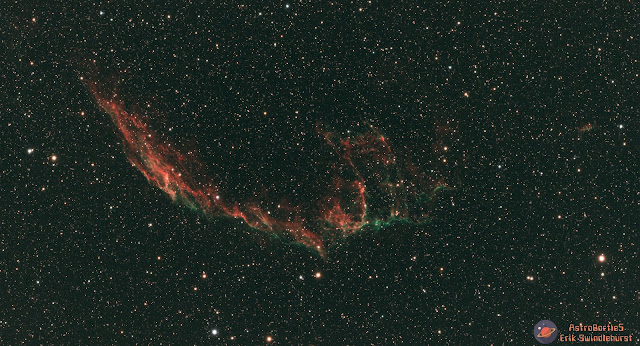Remnants of an exploded star, the Veil Nebula

A favorite target of astrophotographers is the Veil Nebula (NGC 6992). The nebula is so large that it spreads out over the night sky over six times the diameter of our Moon. This nebula is the remnants of a star that was 20 times larger than our Sun. That star died in a supernova around 10,000 years ago, sending its clouds of heated and ionized gas and dust in space. When the light of the explosion finally reached Earth, it would have been brighter than Venus at night and visible during the day. Emissions from the nebula shows the presence of hydrogen II, oxygen, and sulfur. The Veil nebula is located in the constellation of Cygnus, the Swan. It is approximately 2100 light years away in our cosmic backyard of the Milky Way. Be sure to check out my latest video on the Veil Nebula on my YouTube channel. Until next time, clear skies! Enjoy learning more about Astronomy and Astrophotography? Come explore with me with my newsletters and YouTube channel. For my Astrophoto

_RMG_BHC2700.tiff.jpg)